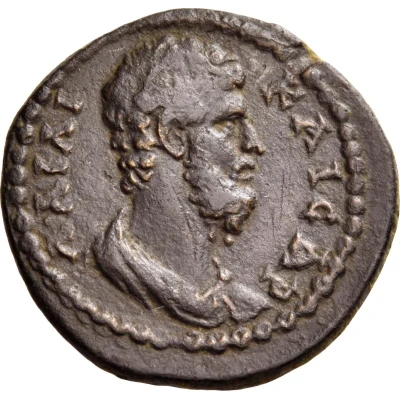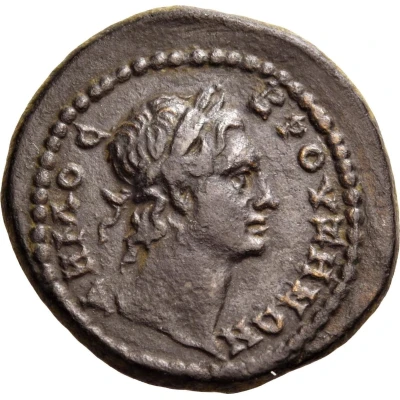


© Nomos AG
Assarion - Aelius ΔΗΜΟϹ ΒΡΟΥΖΗΝΩΝ
| Bronze | 4.91 g | 20 mm |
| Issuer | Bruzus (Conventus of Apamea) |
|---|---|
| Emperor | Hadrian (Publius Aelius Hadrianus) (117-138) |
| Type | Standard circulation coin |
| Years | 136-138 |
| Value | Assarion (0.1) |
| Currency | Drachm |
| Composition | Bronze |
| Weight | 4.91 g |
| Diameter | 20 mm |
| Shape | Round (irregular) |
| Technique | Hammered |
| Orientation | Coin alignment ↑↓ |
| Demonetized | Yes |
| Updated | 2024-10-10 |
| Numista | N#410065 |
|---|---|
| Rarity index | 100% |
Reverse
Laureate head of the youthful Demos of Bruzus to right.
Script: Greek
Lettering: ΔΗΜΟϹ ΒΡΟΥΖΗΝΩΝ
Comment
Hadrian's coinage of Bruzus is actually extremely rare; the RPC recorded just four examples: this is, thus, the fifth known piece, though it is, of course, hitherto unknown. Since this coin's reverse die was used as the obverse die for RPC III 2595, we now can date the magistrate who signed the RPC piece, Rufeinos Drumikos, to late in Hadrian's reign, during the Caesarship of Aelius. Why the obscure city of Bruzus should have produced a coinage with such an artistically superior portrait is unknown.
Interesting fact
One interesting fact about this coin is that it features a rare combination of symbols on its reverse side. The coin bears the image of a Roman Emperor, Aelius, on its obverse side, while the reverse side features a depiction of the goddess Tyche, along with the letters ΔΗΜΟΣ ΒΡΟΥΖΗΝΩΝ (Demos Bruzenon), which translates to "of the people of Bruzus." This combination of imperial and local symbols is unusual and suggests that the coin may have been minted to commemorate a specific event or occasion. Additionally, the use of bronze as the material for the coin was a common practice during this time period, as it was a more affordable and accessible alternative to precious metals like gold and silver.